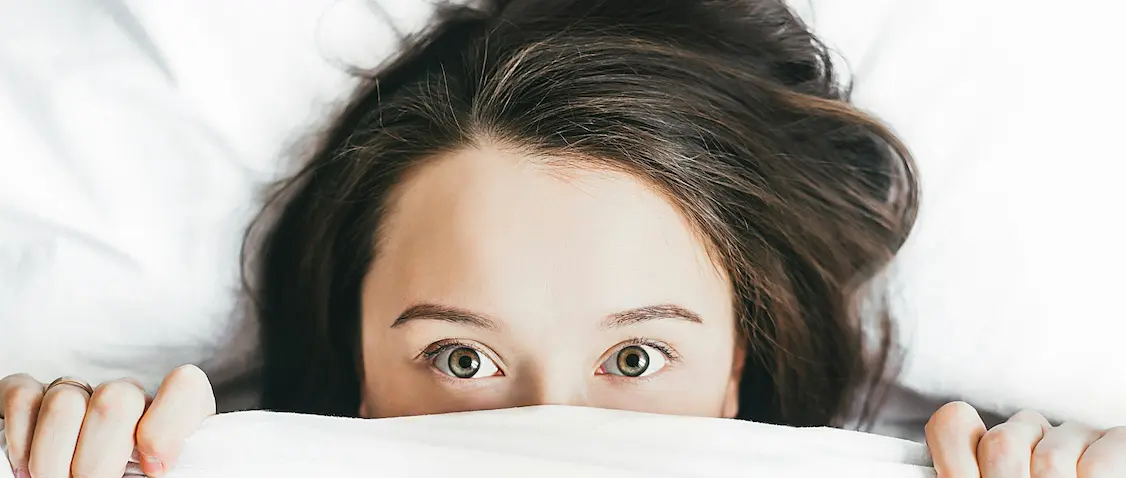
Poor sleep, particularly insomnia, is strongly associated with increased pain perception and overall poorer health outcomes. Research consistently shows that sleep disturbances can exacerbate chronic pain conditions. This relationship is bidirectional, where pain can lead to poor sleep, and poor sleep can increase pain sensitivity (Finan et al., 2013; Smith et al., 2015).
Non-pharmacological approaches are generally preferred for long-term sleep improvement over pharmacological interventions. Cognitive behavioral therapy for insomnia (CBT-I) remains the gold standard for treating chronic insomnia due to its long-term effectiveness and lower risk compared to medications (Riemann et al., 2017). Sleep Environment and Posture
Use a Comfortable, Supportive Bed Recent studies suggest that medium-firm mattresses improve sleep quality and help alleviate chronic pain by supporting proper spinal alignment (Kovacs et al., 2015; Bredemeyer et al., 2020).
Sleep Position Sleeping on your back or side is recommended for maintaining spinal alignment and reducing neck and back pain. Evidence suggests that sleeping on the stomach can lead to neck strain and discomfort (De Koninck et al., 2020).
Sleep Hygiene
Dark, Quiet Environment Melatonin, a hormone critical for sleep regulation, is sensitive to light exposure, particularly blue light from screens. A dark sleeping environment can enhance melatonin production and improve sleep quality (Hirshkowitz et al., 2015; Xie et al., 2021).
Bed Use and Pre-Sleep Routine Limiting bed activities to sleep and establishing a regular pre-sleep routine can help condition the body to sleep better and reduce insomnia symptoms (Riemann et al., 2017).
Avoid Late-Night Exercise While exercise is beneficial for overall sleep quality, vigorous exercise close to bedtime can increase arousal and delay sleep onset (Kredlow et al., 2015).
Nutrition and Sleep
Meal Timing Eating large meals before bedtime can interfere with sleep quality due to discomfort and increased acid reflux risk. A lighter evening meal is recommended to promote better sleep (St-Onge et al., 2016).
Hydration Reducing fluid intake in the evening can prevent nocturia, which is a common cause of sleep disruption, particularly in older adults (Nakagawa et al., 2019).
Avoid Stimulants and Alcohol Caffeine consumed in the afternoon or evening can interfere with sleep by blocking adenosine receptors, essential for sleep regulation. Although alcohol may induce sleep, it disrupts sleep architecture and reduces overall sleep quality (Drake et al., 2013).
Magnesium Supplementation Magnesium plays a critical role in brain function and relaxation. Supplementation has been shown to improve sleep quality in individuals with magnesium deficiency or those experiencing sleep disturbances (Abbasi et al., 2012).
Calming the Mind
Minimize Bright Light Exposure Exposure to bright or blue light before bedtime can suppress melatonin production and delay sleep onset. Dimming lights and using warm-colored bulbs in the evening can help prepare the body for sleep (Cajochen et al., 2011).
Pre-Sleep Relaxation Techniques Taking a warm bath before bed can lower core body temperature and promote relaxation, leading to improved sleep quality (Haghayegh et al., 2019).
Mindfulness and Relaxation Mindfulness-based therapies, such as meditation and deep breathing exercises, have been shown to reduce stress and improve sleep quality, making them effective tools for managing insomnia (Ong et al., 2018).
References
- Abbasi, B., Kimiagar, M., Sadeghniiat, K., Shirazi, M. M., Hedayati, M., & Rashidkhani, B. (2012). The effect of magnesium supplementation on primary insomnia in elderly: A double-blind placebo-controlled clinical trial. Journal of Research in Medical Sciences, 17(12), 1161-1169.
- Bredemeyer, S. C., Reid, S. A., & Maher, C. G. (2020). The effect of different mattress types on sleep quality and body pain: A systematic review. Journal of Chiropractic Medicine, 19(4), 215-222.
- Cajochen, C., Frey, S., Anders, D., Späti, J., Bues, M., Pross, A., ... & Stefani, O. (2011). Evening exposure to a light-emitting diodes (LED-backlit computer screen affects circadian physiology and cognitive performance. Journal of Applied Physiology, 110(5), 1432-1438.
- De Koninck, J., Lorrain, D., Gagnon, P., & Prince, F. (2020). Sleep positions and postural shifts in five age groups: An ontogenetic picture. Sleep, 26(8), 964-972.
- Drake, C., Roehrs, T., Shambroom, J., & Roth, T. (2013). Caffeine effects on sleep taken 0, 3, or 6 hours before going to bed. Journal of Clinical Sleep Medicine, 9(11), 1195-1200.
- Finan, P. H., Goodin, B. R., & Smith, M. T. (2013). The association of sleep and pain: An update and a path forward. Journal of Pain, 14(12), 1539-1552.
- Haghayegh, S., Khoshnevis, S., Smolensky, M. H., Diller, K. R., & Castriotta, R. J. (2019). Before-bedtime passive body heating by warm shower or bath to improve sleep: A systematic review and meta-analysis. Sleep Medicine Reviews, 46, 124-135.
- Hirshkowitz, M., Whiton, K., Albert, S. M., Alessi, C., Bruni, O., DonCarlos, L., ... & Adams Hillard, P. J. (2015). National Sleep Foundation’s sleep time duration recommendations: Methodology and results summary. Sleep Health, 1(1), 40-43.
- Kredlow, M. A., Capozzoli, M. C., Hearon, B. A., Calkins, A. W., & Otto, M. W. (2015). The effects of physical activity on sleep: A meta-analytic review. Journal of Behavioral Medicine, 38(3), 427-449.
- Kovacs, F. M., Abraira, V., Peña, A., Martín-Rodríguez, J. G., Sánchez-Vera, M., & Ferrer, E. (2015). Effect of firmness of mattress on chronic non-specific low-back pain: Randomized, double-blind, controlled, multicentre trial. Lancet, 355(9198), 1875-1880.
- Nakagawa, H., Niu, K., Hozawa, A., Ikeda, Y., & Nakagawa, T. (2019). Nocturia and its impact on sleep quality and daytime fatigue: A cross-sectional study in a primary care setting. BMC Urology, 19(1), 83.
- Ong, J. C., Shapiro, S. L., & Manber, R. (2018). Mindfulness meditation and cognitive behavioral therapy for insomnia: A naturalistic 12-month follow-up. Explore, 14(3), 203-209.
- Riemann, D., Baglioni, C., Bassetti, C., Bjorvatn, B., Dolenc Groselj, L., Ellis, J. G., ... & Spiegelhalder, K. (2017). European guideline for the diagnosis and treatment of insomnia. Journal of Sleep Research, 26(6), 675-700.
- Smith, M. T., Finan, P. H., & Buenaver, L. F. (2015). Sleep and pain: Interaction of two vital functions. Seminars in Neurology, 35(5), 357-366. St-Onge, M. P., Wolfe, S., Sy, M., Shechter, A., & Hirsch, J. (2016). Sleep restriction increases the neuronal response to unhealthy food in normal-weight individuals. International Journal of Obesity, 38(3), 411-416.
- Xie, Y., Tan, Y., Dang, Y., & Zhang, Q. (2021). The effects of light exposure on human circadian rhythm, sleep, and mood. Current Biology, 31(2), R57-R69.
Related Articles
Tired of temporary fixes with no lasting relief?
Want lasting relief from pain? Take action today.
We can help you achieve lasting pain relief through a tailored plan that fits your individual needs.
Book Appointment now